
The Hawaiian Islands hold a rich and beautiful indigenous culture that is still alive today — from hula and chanting, to surfing and the timeless art of lei making. One of the most treasured traditions is Hawaiian shell jewelry (ハワイアン シェル ジュエリー), where tiny jewels from the sea, such as Kahelelani shells and puka shells, are carefully collected and strung together just as the ancient Hawaiians once did.
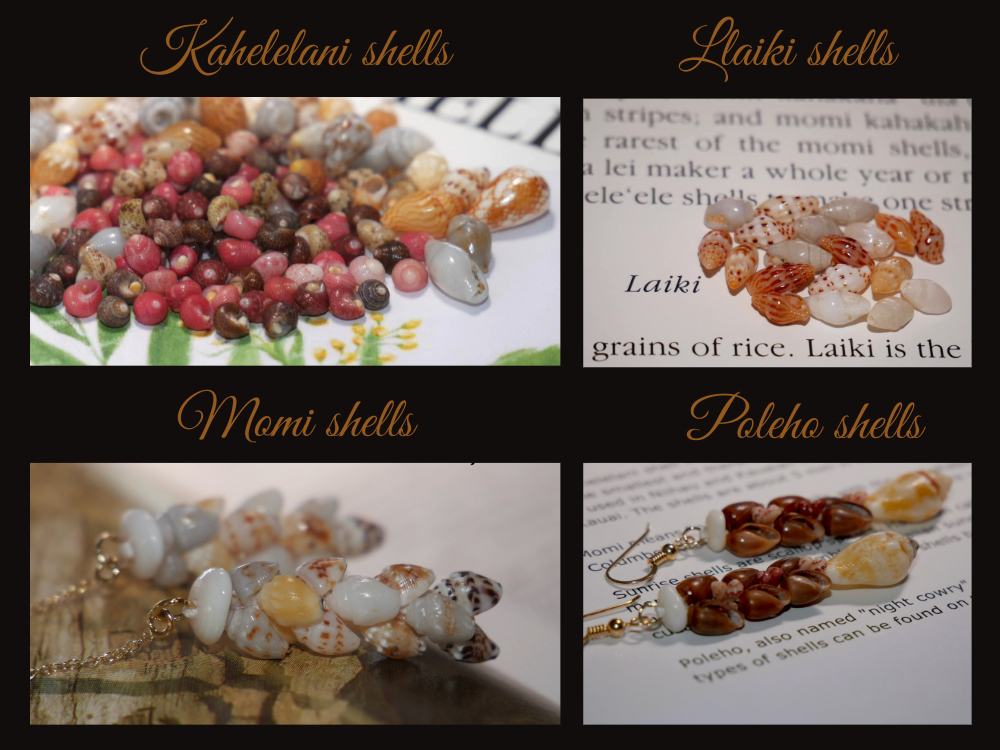
The Role of Puka Shells in Hawaiian Jewelry
Puka shells (from the Hawaiian word puka, meaning “hole”) are often used as clasps for Hawaiian shell leis. They form naturally with a hole in the center, making them perfect for stringing. These shells vary in color and add a traditional touch to Niʻihau shell jewelry (ニイハウ シェル ジュエリー) and lei making.
Cowry shells (Cypraeidae) and puka shells are frequently used to finish leis, creating strong and natural clasps. Preparing these shells takes time — the sand must be cleaned out completely, and then each hole must be poked in just the right spot using the proper tools. Once they’re ready, the real joy begins: stringing the shells together into your very own masterpiece!
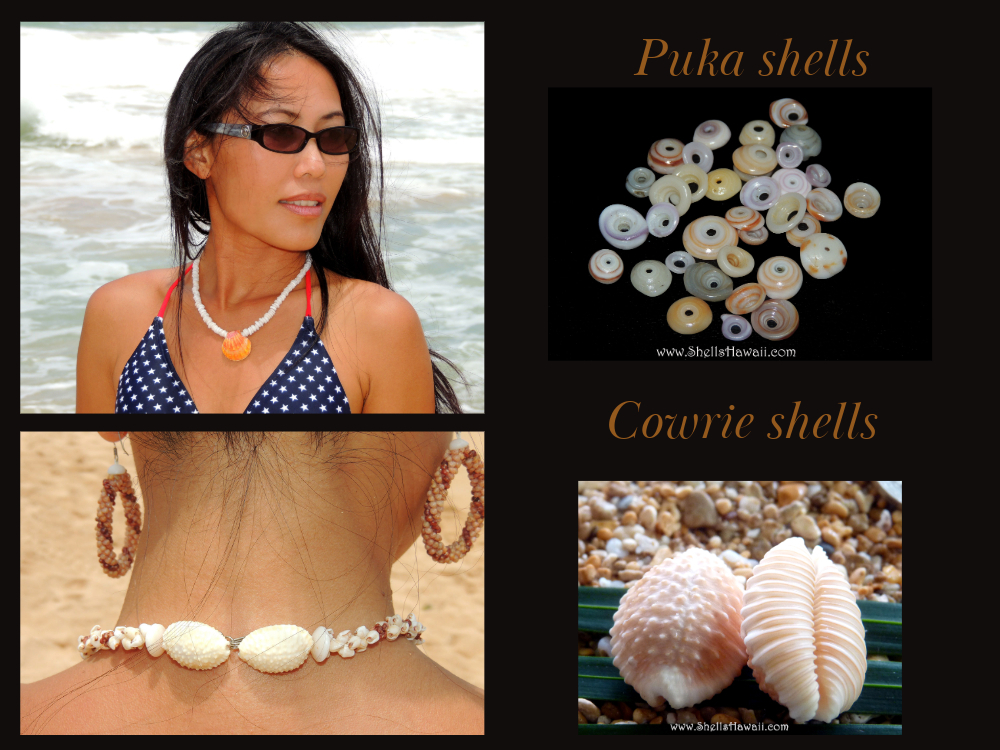
The Art of Collecting Shells
Collecting shells may sound simple, but it’s actually both fun and challenging. Most shells are found along the shoreline, but only about 1 out of every 50 might be good enough to keep. To pick them up, you’ll need patience — and a pair of tweezers — because each shell is gathered one by one.
Shelling is also seasonal. The best time depends on the tides and the time of year. Experienced collectors know that timing is everything when it comes to finding the most beautiful Kahelelani shells (カヘレラニ シェル) for ハワイアン シェル ジュエリー.
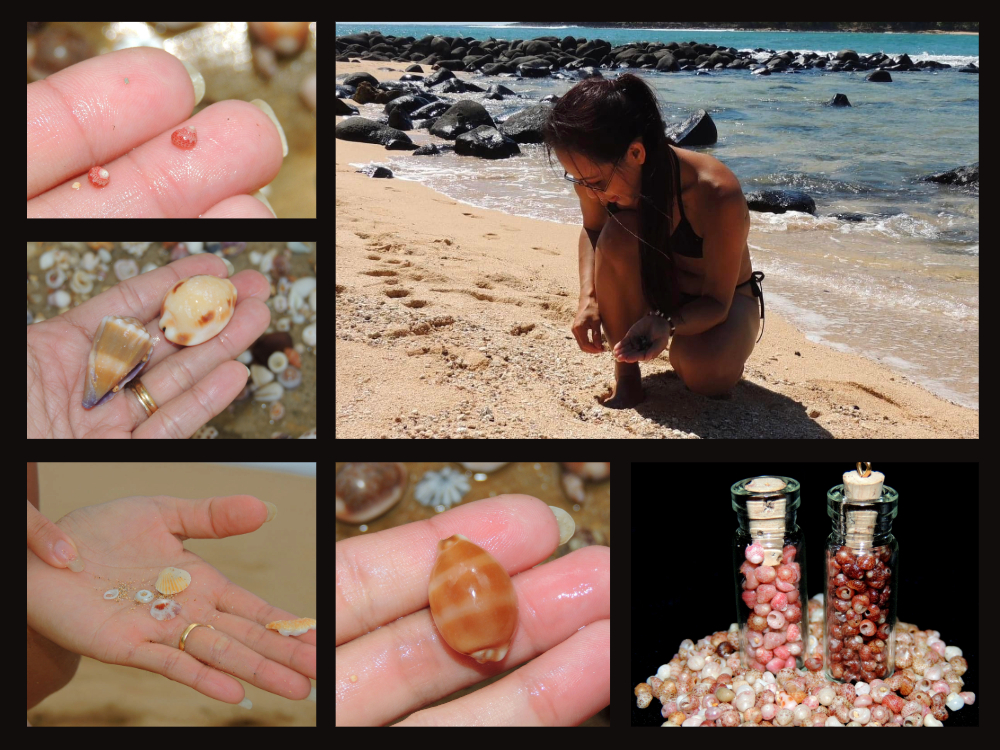
Hawaiian Shell Jewelry Today
Even now, Hawaiian shell leis (ハワイアン シェル レイ) are made with the same care and technique as they were generations ago. This art form continues to connect us to the sea, the land, and the traditions of Hawaiʻi. Whether it’s ニイハウ シェル ジュエリー, Kahelelani leis, or jewelry finished with puka clasps, each piece is a small reminder of the islands’ beauty and heritage.
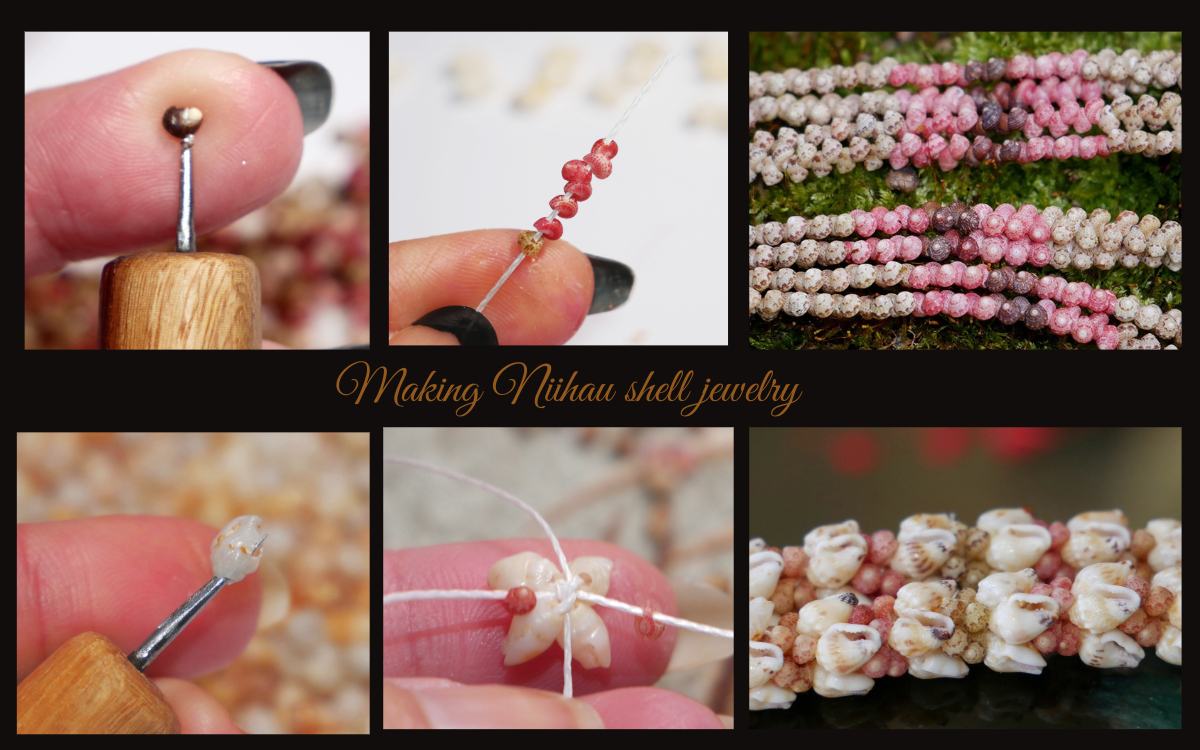
Quality vs. Imperfect Shells in Hawaiian Jewelry
Not every shell is created equal. When it comes to Niʻihau shell jewelry (ニイハウ シェル ジュエリー) and Hawaiian shell jewelry (ハワイアン シェル ジュエリー), the quality of each tiny shell makes all the difference.
What Makes a Shell “Quality”?
A quality Niʻihau shell is one that is strong, full of natural luster, and shaped evenly so it lies smoothly in a lei. These shells shine beautifully, even in low light, and their color stays vibrant. Collectors look for shells without cracks, chips, or worn edges — the kind of shell that will last for generations once strung into a lei.
The most prized examples include:
-
Kahelelani shells (カヘレラニ シェル) with deep, rich color tones.
-
Momi shells (モミ シェル) that are smooth and even in size.
-
Laiki shells (ライキ シェル) that are perfectly tiny and rice-shaped.
What About Imperfect Shells?
Imperfect shells may have tiny holes, cracks, faded color, or uneven shapes. Sometimes they’ve been tumbled by waves or worn down by sand. While these shells may not meet the standards for fine Niʻihau shell leis (ニイハウ シェル レイ), they still carry beauty.
Many artists use imperfect shells for practice, for casual crafts, or even in mixed-style jewelry where a little natural variation adds charm. They may not be heirloom quality, but they still remind us of the ocean’s journey.
Why Quality Matters in Niʻihau Shell Jewelry
Because each lei or earring requires hundreds — sometimes thousands — of shells, even small imperfections can affect the overall look and strength of the jewelry. That’s why Hawaiian shell jewelry (ハワイアン シェル ジュエリー) makers spend countless hours sorting shells, separating the quality ones from the imperfect ones.
When you see a finely crafted Niʻihau shell lei (ニイハウ シェル レイ), you’re looking at years of collecting and hours of sorting. That’s what makes these pieces so rare, valuable, and deeply respected.
Treasure in Every Shell
Even if a shell isn’t perfect, it still holds a story — of tides, currents, and the life it once sheltered. Every collector knows the joy of discovering a perfect gem among hundreds of imperfect ones. It’s part of the magic that keeps us searching, shell by shell, with tweezers in hand and patience in our hearts.
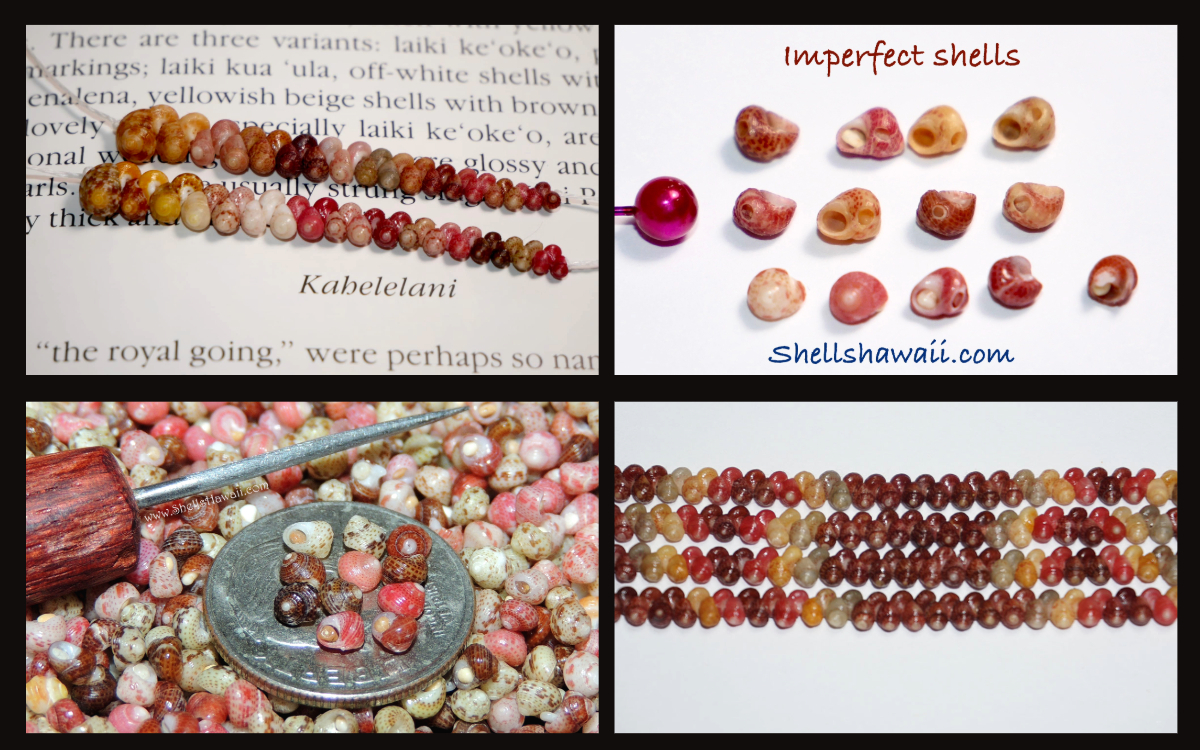
How to Select a Hawaiian Shell Lei (ハワイアン シェル レイ)
When choosing a Kahelelani shell lei (カヘレラニ シェル レイ), there are five main aspects that determine its overall beauty and value. These same standards apply to all fine Niʻihau shell jewelry (ニイハウ シェル ジュエリー), whether you’re considering a lei, bracelet, or earrings.
1. Color (色合い)
In a perfect Hawaiian shell lei (ハワイアン シェル ジュエリー), the shells are carefully sorted for color.
-
In monochromatic styles, the shells should match as closely as possible — for example, a lei made with pure burgundy Kahelelani shells should not have brown tones mixed in, as they distract from the rich, deep red.
-
In multi-color designs, the shells should be combined thoughtfully so the colors complement one another, highlighting the natural brilliance of each hue.
2. Luster (輝き)
Luster is one of the most important qualities of Niʻihau shell jewelry (ニイハウ シェル ジュエリー). Shells with natural shine — much like pearls — are the most prized and beautiful.
It’s said that shells carried by ocean currents to Kauaʻi often lose some luster along the way. The shells of highest brilliance come directly by boat from Niʻihau, and these are the treasures most collectors seek.
3. Flaws (欠点)
Each shell in a quality Kahelelani lei (カヘレラニ シェル レイ) should be as flawless as possible:
-
Free of chips, cracks, or damage.
-
Free of debris or grains of sand.
-
Without holes caused by predators such as octopus.
Most importantly, no life should ever be taken in this process. If you discover a shell with life still inside, please return it gently to the ocean. Respect for nature is part of the tradition of ハワイアン シェル ジュエリー.
4. Size (サイズ)
Uniform size or a carefully designed taper adds symmetry and beauty to a lei. Smaller Kahelelani shells (カヘレラニ シェル) are especially prized, as they are far more difficult to string and create with.
Leis made from tiny, delicate shells are extremely rare, collectible, and naturally more valuable.
5. Craftsmanship (技術)
True craftsmanship in Niʻihau shell jewelry (ニイハウ シェル ジュエリー) is easy to recognize:
-
Each shell is pierced in the exact same place.
-
The thread is invisible between shells.
-
The shells form a tight, even pattern that prevents them from twisting out of place.
This precision not only creates beauty but also ensures durability — so your lei will last for generations.
Final Thoughts
Selecting the right Hawaiian shell lei (ハワイアン シェル レイ) means looking closely at color, luster, flaws, size, and craftsmanship. Each of these elements comes together to create a piece that is both timeless and full of aloha.
I hope these tips help you better understand the art of choosing a quality Niʻihau shell lei (ニイハウ シェル レイ). Mahalo nui loa for visiting ShellsHawaii.com. Please reach out if you have any questions or would like more guidance — I’m always happy to share what I’ve learned
✨ If you’d like to learn more about Niʻihau shells (ニイハウ シェル), jewelry care, and Hawaiian traditions, I invite you to check out my blogs page. You’ll find tips, history, and a deeper look into the art of shell jewelry making
Much aloha,
Janjira
 USD
USD

